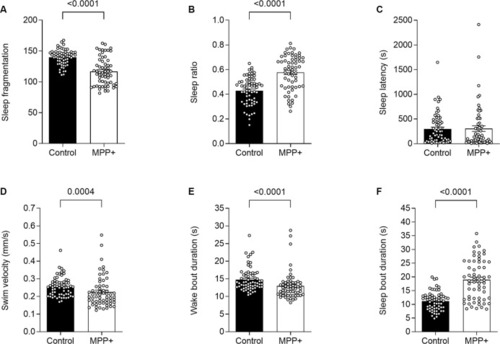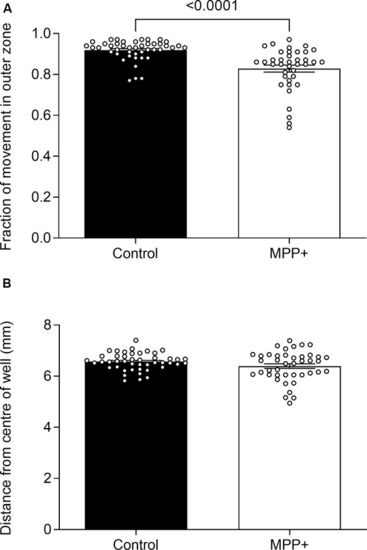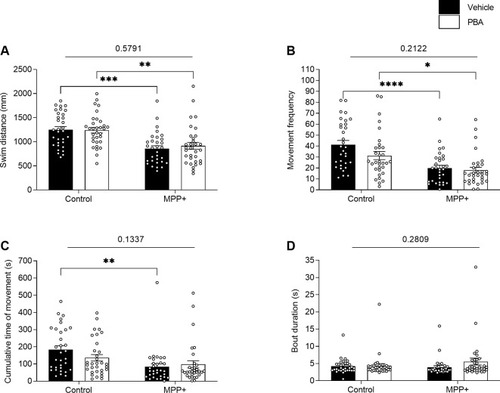- Title
-
Multi-parameter Behavioral Phenotyping of the MPP+ Model of Parkinson's Disease in Zebrafish
- Authors
- Christensen, C., Þorsteinsson, H., Maier, V.H., Karlsson, K.Æ.
- Source
- Full text @ Front. Behav. Neurosci.
|
Overview of behavioral recording. Representative plot of swim distance of larvae exposed to 500 μM 1-methyl-4-phenylpyridinium (MPP+; red) vs. control (black). Inset (top right) shows the swim distance during photomotor assay measured between 1:00 pm and 6:00 pm consisting of five 30-min intervals alternating dark (OFF, gray boxes) and light (ON, white boxes). Arrows indicate the lights-on phases used for analysis. Sleep parameters were evaluated after the transition to darkness from 10:00 pm to 8:00 am the following day. |
|
MPP+ effects on motor activity of zebrafish larvae. Motor activity was evaluated at 6 days post fertilization (dpf) in absence (Control) or presence of 500 μM MPP+ for |
|
MPP+ effects on sleeping pattern of zebrafish larvae. Sleeping pattern was evaluated in absence (Control) or presence of 500 μM MPP+ for |
|
Effects of MPP+ on thigmotaxis. Thigmotaxis was evaluated at 6 dpf in the absence (Control) or presence of 500 μM MPP+ and represented as |
|
Effects of glial-derived neurotrophic factor (GDNF) on motor activity of MPP+-treated zebrafish larvae. Larvae were incubated in the absence (black bars) or presence (white and gray bars) of 500 μM MPP+ and injected with 72.9 ng GDNF (gray bars) at 4 dpf before assessing motor activity at 6 dpf for |
|
Effects of GDNF on the sleeping pattern of MPP+-treated zebrafish larvae. Larvae were incubated in the absence (black bars) or presence (white and gray bars) of 500 μM MPP+ and injected with 72.9 ng GDNF (gray bars) at 4 dpf before assessing |
|
Effects of 4-phenylbutyrate (PBA) on motor activity of MPP+-treated zebrafish larvae. Larvae in the absence (Control) or presence of 500 μM MPP+ were treated with vehicle (black bars) or 100 μM PBA (white bars). Motor activity was evaluated for |
|
Effects of PBA on the sleeping pattern of MPP+ treated zebrafish larvae. Larvae in the absence (Control) or presence of 500 μM (MPP+) was treated with vehicle (black bars) or 100 μM PBA (white bars). Sleeping pattern were evaluated for |








